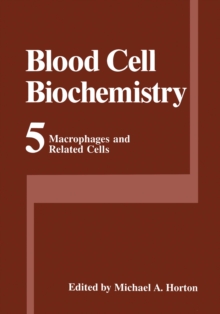
Basophil and Mast Cell Degranulation and Recovery PDF
by Ann M. Dvorak
Part of the Blood Cell Biochemistry series
Description
Basophils and mast cells are similar but unique secretory cells with a well-documented role in immediate-hypersensitivity reactions.
The presence of these cells in various cell- mediated hypersensitivity reactions, in tissues of multiple diseases, and as a component of the host reaction to injury and repair in numerous circumstances is well known.
Release of stored and newly generated mediators of inflammation from basophils and mast cells contributes to the cascade of pathogenetic events in circumstances under which these release reactions occur.
Despite insights acquired through studies of these pathologic events, the role of basophils and mast cells and their secretory products in health is not known.
In this book, I review much of the structural information regarding basophils and mast cells of multiple species.
Ultrastructural studies of rat mast cells historically precede and quantitatively exceed similar studies of basophils and mast cells of other species.
Therefore, I first review these background studies as an entity.
Then I discuss the contents of two prominent organelles-granules and lipid bodies-in basophils and mast cells of several species.
The ultrastructural morphology of basophils and mast cells in three species is presented in detail to establish appropriate guidelines for their recognition and to provide general rules for analysis which are appropriate for the identification of these cells in other species as well.
Information
-
Download - Immediately Available
- Format:PDF
- Publisher:Springer US
- Publication Date:29/06/2013
- Category:
- ISBN:9781475795257
Other Formats
- Paperback / softback from £112.49
- Hardback from £171.75
Information
-
Download - Immediately Available
- Format:PDF
- Publisher:Springer US
- Publication Date:29/06/2013
- Category:
- ISBN:9781475795257










